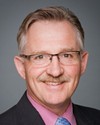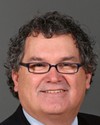You have a couple of minutes, Mr. Lunney. Go ahead.
Evidence of meeting #9 for Fisheries and Oceans in the 39th Parliament, 1st session. (The original version is on Parliament’s site, as are the minutes.) The winning word was seals.
Evidence of meeting #9 for Fisheries and Oceans in the 39th Parliament, 1st session. (The original version is on Parliament’s site, as are the minutes.) The winning word was seals.
Conservative
Conservative

James Lunney Conservative Nanaimo—Alberni, BC
Thank you.
I just want to pick up on the comments made at the beginning about reducing the population, that we don't do that for ecological purposes in terms of the effect on cod stocks and so on. I'm thinking back to a few years ago when I was on the committee, when we heard some testimony....
We're talking about the harvest of these young seals now, but adult seals roam throughout the Atlantic area. I think there were concerns expressed by those who are farming...or not farming, but for wild Atlantic stocks, the seals were being found way up the river where they had not habitually been seen; some of my colleagues might remember which rivers we're talking about in the Atlantic provinces. At that time, I think we heard of seal populations of over 7 million.
I'm wondering if that isn't evidence that the seal population is certainly damaging Atlantic salmon. There were allegations at that time they may become endangered because of the over-predation by seals.
I wonder if you would care to comment on that.
Assistant Deputy Minister, Fisheries and Aquaculture Management, Department of Fisheries and Oceans
Just generally, as noted before, the role that seals play in the population of fish is very complex. For example, cod can lay 1 million or 5 million eggs, depending on the size of the female. Obviously there's a high mortality on those individuals at some stage--for instance, they're killed by filter feeders that are in turn eaten by seals. As to how a seal would play a role in that, when we asked an eminent panel of scientists to look at it, they could not come up with advice.
Having said that, they did suggest that there might be something to look at in terms of seal exclusion zones where you have spawning concentrations. We looked at how seal exclusion zones in those areas could be contributing to the rebuilding of stocks. There weren't that many seals in those locations, so it wasn't a big factor.
We do have programs in the case of nuisance seals, or seals that have been targeting particular runs. For example, in the river systems, where seals have been a big factor in mortality, we have in the past taken action in those areas.
Conservative

James Lunney Conservative Nanaimo—Alberni, BC
People were concerned that seals were gathering in the mouths of rivers at migration time and literally cleaning up on the young salmon going out to...or the salmon coming back to the river systems, I guess.
Assistant Deputy Minister, Fisheries and Aquaculture Management, Department of Fisheries and Oceans
There was both. On the west coast, we have taken action to deal with the nuisance populations that were having a devastating impact on certain populations.
Senior Fisheries Management Officer, Department of Fisheries and Oceans
We have created a permit system now for all of Atlantic Canada. If there is a nuisance seal established, you can hunt it. What you do is you go and apply for a licence and establish that it is there.
We found, I think, in looking at this situation, that it's not so much harp seals that you'll catch in a river but more likely grey or harbour seals. Harbour seals we have to be bit more careful of; in some areas they're not very numerous.
So that's what we've done; we've created a permit system. If people can establish that it is a problem in a particular river, it can be dealt with.
Conservative
Liberal

Lawrence MacAulay Liberal Cardigan, PE
Thank you very much, Mr. Chairman.
Welcome to our witnesses.
What you would view as nuisance seals and what fishermen in my area would view as nuisance seals would be two different things. They are viewed as very damaging to a lot of stocks. I know you indicated that it's a complex issue, but I think it's fair to say that they eat a lot of cod and they eat a lot of lobster. It's a good diet, but....
You mentioned sustainability. What number do you want to keep the stock at? Is it 5.5 million?
Assistant Deputy Minister, Fisheries and Aquaculture Management, Department of Fisheries and Oceans
We don't have a target, as noted in the documents. Having said that, we want to keep it above the 70%. Somewhere above 4 million is what we're suggesting. That would be done not because of their role in the ecosystem. We just don't...or can't get a handle on what the population.... We can't say, “If you reduce the population to 2 million, there will be a reaction in terms of cod or any other species.” That's not possible. We do know that they eat fish that can be predators on larval cod, for example. Mackerel, herring--they're all filter feeders, and they will filter out juvenile fish as well as other products. They're subject to predation by seals as well.
How does that all work out? We don't know, but we are suggesting in the plan that we would keep the population above 4 million. That would provide a population that would give the hunters a healthy harvest. That in itself is a good economic opportunity now.
Liberal

Lawrence MacAulay Liberal Cardigan, PE
But it's fair to say that the stock is probably close to 50% larger than that at this time.
Assistant Deputy Minister, Fisheries and Aquaculture Management, Department of Fisheries and Oceans
We estimate it's around 5.8 million, so there's a good buffer there.
Having said that, as it's noted, we are harvesting aggressively. When the markets are there, there's an opportunity for the hunters to take more than what's called the “replacement yield”. The number of new pups that are produced minus the natural mortality will give you a replacement yield that you can take in a hunt and have no impact on the population.
Well, we're above that. If we were to keep the level of hunt going, we might within a few years come down to that 4 million. Then we'd have to switch our strategies. But we are taking now at a level that should prevent further growth in the population and could have some modest impact on the overall stock over time.
Senior Fisheries Management Officer, Department of Fisheries and Oceans
Just to add to that, we did have more aggressive options that we presented at the forum. There were lots of fishing groups there as well as seal harvesters, and it was amazing that the majority didn't want us to do that, to pursue aggressively.
Liberal
Senior Fisheries Management Officer, Department of Fisheries and Oceans
No, there were fishing industry people--FFAW, all kinds of people--there as well.
You have to remember that there are different culprits the fishing industry may see; in some areas, it's grey seals. We do know from previous surveys that Atlantic cod made up 3% of harp seals' diet. They're in these waters for a limited time. We did try the seal exclusion zone without much success, as recommended by FRCC. We know from the eminent panel that we would have to take an enormous number of harp seals to have even a marginal impact on that consumption level. I think the eminent panel estimated that we have to take 750,000 extra seals in a year just to have a marginal impact. That would be enormous, and have enormous consequences for Canada, if we did.
Liberal

Lawrence MacAulay Liberal Cardigan, PE
All right.
When you go to the Hague or the parliamentary assembly of whatever, the people you talk to there are more or less convinced that, as Mr. Simms was indicating, we just harvest all over the Atlantic region like a wild bunch of people who don't care about anything. But is it fair to say that the seal fishery off the east coast is close to being one of the most monitored fisheries in the world?
Assistant Deputy Minister, Fisheries and Aquaculture Management, Department of Fisheries and Oceans
It's very highly monitored relative to our other domestic fisheries. We monitor the nose and tail of the Grand Banks extremely carefully and very heavily. That probably has more monitoring than anything else. But we do monitor the seal fishery more than most of the other fisheries in the domestic waters. There are some exceptions; with crab we have 30% observers--
Liberal

Lawrence MacAulay Liberal Cardigan, PE
Yes, but it's very heavily monitored, and it's fair to say that the problem we have as an area, as a region, is the way we present the issue worldwide.
I flew over with McCartney to Prince Edward Island from Halifax. You'd think there was a lord on the plane. Well, I don't dislike McCartney--he's a great musician--but I had no desire to touch him, because what he was doing....
It's comical, but the truth is that these people were coming to take a livelihood away from people who need it. I don't like that, and I told him so. I don't dislike him as a person, but if you make a billion dollars some way in this world and then decide you're going to use it to destroy the livelihood of hard-working people, I don't like it.
Liberal

Lawrence MacAulay Liberal Cardigan, PE
That's what we have to fight against. I believe that is one of the biggest problems. We've got celebrities in the world.... This is a big issue. The picture they had in newspapers around the world--it was great, funny, cuddly, cute. But all it did was indicate to all the people who have a few dollars to donate that we're people who are barbarians, who don't care, who kill just at will. That is one of the biggest problems we have.
On page 10, you talk about how this is monitored. You talk about the small boats and how they're monitored. I think we have to be awfully careful about how we give our information, and make sure that when we talk about the small boats, the figures are kept well, and you know how many seals are taken.
The fact is that the population has not decreased, it has increased. But when you listen to the world media, you would feel.... I don't know whose fault it is, but we're not presenting the issue properly.
Assistant Deputy Minister, Fisheries and Aquaculture Management, Department of Fisheries and Oceans
It's clear that the message in Europe has generally been the message presented by the Humane Society of the United States, in the past IFAW, and other organizations. They have a point of view that is...you know, “skinning alive” and all those kinds of accusations. If people think critically about it, it's kind of silly. Who's going to try to make a living selling products where you're skinning an animal alive? It's just silly.
What we've done now is we have focused on Europe. When parliamentary committees like this have met in the Hague or in Berlin, we've sent people. For instance, we sent the director general of resource management there to present our case, our data.
Liberal

Lawrence MacAulay Liberal Cardigan, PE
When those people do go to those places, do they indicate that the seal population has little or no effect--or we're not sure what effect it does have--on the overall fishery, if it does harm or doesn't harm?
And I don't know that that's the biggest issue. We have to be careful that we....
The world should know what's on page 10 of your deck. They don't know that.
Assistant Deputy Minister, Fisheries and Aquaculture Management, Department of Fisheries and Oceans
Yes, and we make sure they understand it--
Conservative

The Chair Conservative Gerald Keddy
I'm sorry, Mr. MacAulay, you're two minutes over, and we have two speakers--Monsieur Blais and Mr. Manning--who want to try to get a couple of questions in. Plus we have more witnesses.
Monsieur Blais.
Bloc

Raynald Blais Bloc Gaspésie—Îles-de-la-Madeleine, QC
Thank you very much, Mr. Chairman.
I'd like to talk about what you call “possible changes to hunting methods/requirements” on page 9 of the English version of your document.
What is the extent of the possible changes? What does that mean in detail?
Senior Fisheries Management Officer, Department of Fisheries and Oceans
This is a report presented by the Independent Veterinarians Working Group, which is made up of experts. At the committee's last meeting in Newfoundland, in November, the group made a presentation on the way to improve hunting practices. That presentation was well received by seal hunters.
There are some technical changes that include, for example, different ways to determine whether each animal is dead. Instead of checking the eye blinking reflex, they check [Inaudible: Editor]. They're also studying a new system for rendering each animal unconscious and for removing the blood quickly rather than checking to see whether the animal is dead.